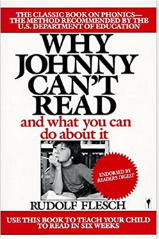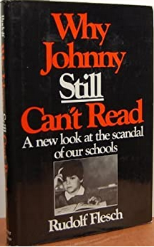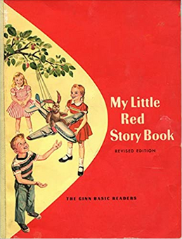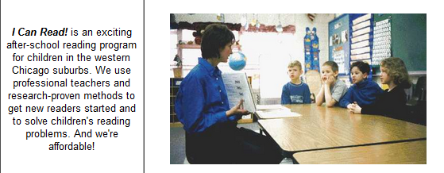
The Problem
DECADES OF PUBLIC SCHOOL READING FAILURE
If you’re thinking of fixing the schools, forget it. Thousands of parents have fought this fight before you, each spending hundreds or thousands of hours of personal time trying to fix the system. All have failed. The proof is in the numbers. Despite enormous increases in public school funding and millions of man-hours spent by parents fighting the system, the reading performance of U.S. school children never improves.
Here are the data straight off the U.S. Department of Education’s “NAEP Data Explorer” report generator, showing reading scores dating back to 1992 (“NAEP” is “National Assessment of Educational Progress”):

A “proficient” score for 12th grade is 302. Our twelfth grade NAEP reading scores are only slightly above the NAEP proficiency level for eighth grade (281). As you can see, things are not only bad but they’re going the wrong way. You can easily reconstruct this report for yourself.
Public schools in the USA have been failing to teach most children to read proficiently for at least 80 years. Three generations of concerned parents have fought against the schools’ apparent policy of preferring to use failed reading instruction methods, all for naught.
MY ODYSSEY WITH THE PUBLIC SCHOOL LITERACY NIGHTMARE
Generation 1: The “Look-Say” Era | 1940 to 1980 | Why Johnny Can’t Read
By 1955, the year I was born, schools nationwide had adopted a disastrous reading-instruction method called "Look-Say." Rather than teach children phonics (i.e. how to decode words sound-by-sound), they had latched onto the notion that children should simply memorize whole words. You may have heard of the "Dick and Jane" readers, books containing many repetitious sentences like, "See Dick. See Jane. See Dick run. Run Dick Run.", etc. These were the core reading instruction books of the time.
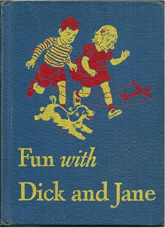
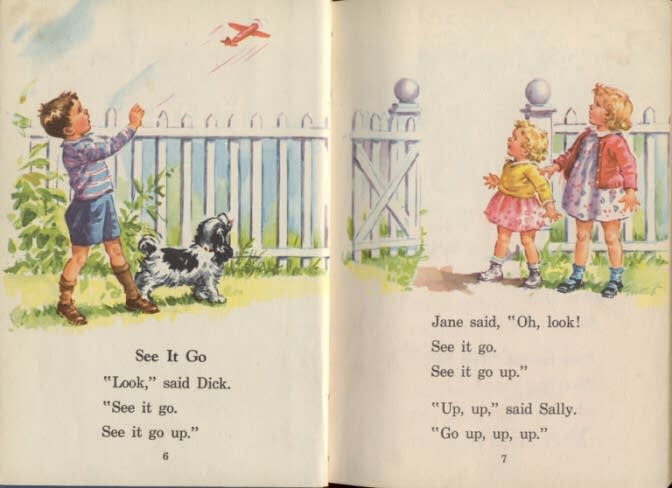
The results of the schools' adoption of this ideology were predictably disastrous. If you want to understand just how disastrous, read the book "Why Johnny Can't Read," originally published in 1955 but still in print and widely available.
The first chapter is written as a letter to parents; you can read it here. In it, Flesch tries to explain the insanity that had already engulfed all of U.S. elementary education. By 1955 the reality was already so bizarre that merely trying to explain it made one sound like a lunatic.
Why Johnny Can’t Read sold millions of copies even in its first edition and it produced a lot of really bad PR for the schools. Rather than reform, the schools went on the offensive against parents. If you want to learn how our nation's first serious attempt at school reform (in my lifetime at least) turned out, read the follow-up book, published 26 years later by the same author; it's out of print, but you can still get copies of "Why Johnny Still Can't Read" from various sources:
I entered the public schools in 1961 as a first-grader. Like most kids I would have been doomed to a life of functional illiteracy by their reading curricula, except that my mother had read Why Johnny Can't Read and followed the instructions at the end of the book - she had taught me how to read phonetically. Even she probably didn’t realize how profoundly this would affect my life.
My school was using knockoffs of the Dick-And-Jane readers. They were color-coded to indicate reading level. "My Little Red Story Book" was the first one, "My Little Green Story Book" was the second, etc. Being a phonetic reader on my first day of first grade, I thought these books were ridiculous. I could read all of them.
Being such an "exceptional" (really just "competent") reader immediately put me near the top of my class, where I remained for the rest of my education, all the way through college. It would not be until my adulthood that I would realize the significance of what had happened to me.
For more info on the history of this era, read this article from 1982: The Victims of "Dick and Jane".
Generation 2: The “Whole Language” Era | 1980 to 2000 | Fighting The Reading Wars
Fast forward to 1994. I had two daughters in the public schools and realized that they were not receiving anything resembling a rational education. By now the schools nationwide had abandoned the "Look Say" readers and were into a new fad, "Whole Language." Whole Language was like Look-Say in that it didn’t teach phonics, but it went a step further by eliminating most of the word memorization under the idea that the specific words in the text don’t even matter.
To understand the schools’ reading ideology during this period, read “At a Loss for Words,” which tells the story of one of its millions of victims. The biggest proponent of Whole Language was a guy named Ken Goodman. In the article you can read a brief interview with him, from which you can get a sense of his mentality. Here’s a sample:
"Word recognition is a preoccupation," he said. "I don't teach word recognition. I teach people to make sense of language. And learning the words is incidental to that."
He brought up the example of a child who comes to the word "horse" and says "pony" instead. His argument is that a child will still understand the meaning of the story because horse and pony are the same concept.
I pressed him on this. First of all, a pony isn't the same thing as a horse. Second, don't you want to make sure that when a child is learning to read, he understands that /p/ /o/ /n/ /y/ says "pony"? And different letters say "horse"?
He dismissed my question. "The purpose is not to learn words," he said. "The purpose is to make sense."
So for at least two decades the K-12 educational establishment got almost all its reading ideology from a guy who believes that recognizing words is not an essential component of reading. This should give you some indication of the intellects of the people who run the system.
After much consternation we pulled our kids out of the schools and started home-schooling them. One of the first things we did was teach them how to read phonetically. I became incensed at what had happened to my daughters and started studying what was going on in the public schools nationwide. My primary reference in this was the 1994 "National Assessment of Educational Progress" (NAEP), a U.S. Department of Education publication that showed in no uncertain terms that the public schools were engaged in nothing short of a national disaster.
At this time people were starting to get onto the Internet and I started organizing online with other concerned parents in Illinois (where I lived). To make a very long story short, we created a "parents' union" of sorts in order to take on the educational establishment. We called ourselves the "Illinois Loop" and got our own domain at http://illinoisloop.org. If you want a sample of some of my writings for this group, you can see them using this search. Our group contained both concerned parents (like me) and educational professionals who didn't buy into the prevailing educational ideology. We struggled about seven years butting heads with the system before giving up. The press called it "The Reading Wars." We fought with all the energy we had, but we didn't win. Unionized paid professionals with billions of dollars behind them, it turns out, can beat a ragtag group of objecting parents.
In 1997, after realizing how my own local public schools were devastating the children in my community, I created an after-school reading program called "I Can Read," which operated until 2002. During those five years we expanded steadily, to the point where I was running three locations in addition to working full time as a software developer. I was planning to switch careers to expand “I Can Read” when the Tech Bust wiped out much of the economy of the western Chicago suburbs and took my business down with it. To put it simply: we took kids who were destroyed by the educational malpractice in our local suburban schools and we advanced their reading capabilities by one full school year every 13 weeks. We documented our results and I also published many educational opinion pieces, all of which you can find by following the links on the site.
Generation 3: The “Balanced Literacy” Era | 2000 to now | Fighting The Big Lie
Fast-forward to today. The one thing that the schools learned in the 1990s was that fighting against parents produces a lot of bad PR. Our movement got a lot of press that reflected poorly on them, so they stopped fighting us openly and instead renamed their reading ideology again. Instead of "Look Say" or "Whole Language" we now have "Balanced Literacy." It's the same old wine in a brand-new bottle. It sounds balanced because it has "balanced" in the name. Clever.
The whole concept of “balancing” two completely opposing views of reading is farcical. Teaching a child to read phonetically requires significant effort; you cannot just dabble in it. Teachers who don’t take phonics seriously will not engage in enough effort to make a difference. In a successful curriculum phonics instruction must dominate.
Every student emerges from a reading program with one of two incompatible approaches:
- The child will decode first, and use guessing “strategies” later and only as a last resort.
- The child will use guessing “strategies” as the primary approach, and then look for lexical “clues” (e.g. checking only the first letter to see what sound a word might start with) only when all those fail.
Method 1 describes competent readers. Method 2 describes functional illiterates.
There is no “balanced literacy." You are either investing a lot of time teaching a child to decode or you aren’t. “Balanced Literacy” is a term used to gloss over the fact that your child isn’t going to be taught to use decoding as a primary reading method.
Ultimately the results are the only thing that matters. Reading proficiency in U.S. schools is declining in the era of “Balanced Literacy," just as it declined under “Whole Language” and “Look-Say.” If you'd like to know more about the tragedy of today’s reading instruction, read these articles:
WHY CAN’T PUBLIC SCHOOLS BE REFORMED?
The reason is simple: public schools are socialist entities. They get your money up front and unconditionally. It doesn’t matter how much they succeed or fail – they get the money anyway. Most of the money your school district receives doesn’t even come from district parents; the main sources are:
- shareholders of corporations that aren’t in your district (via state & federal corporate taxes),
- people who aren’t in your district (via state & federal personal taxes),
- corporations and childless property owners within the district,
- and childless renters who rent from property owners (and who therefore pay property taxes indirectly).
Here for example is the breakdown of California K-12 funding sources:
So the small “Local Property Tax” slice mostly doesn’t come from district parents, and even the little money that a school district receives from local parents is unconditional and therefore exerts no influence on school policy. In the world of school district funding, parents simply don’t matter.
The disconnection between the funding of the schools and local parents means that public schools are mostly not accountable to their customers. The schools’ only conditional funding comes from the state and federal governments, both controlled by extremely rich bureaucrats don’t suffer at all when your child emerges from twelfth grade as a functional illiterate.
This is why all efforts at school reform have failed. You cannot reform a socialist institution. Its funding has nothing to do with its performance. In the real world, institutions respond only to conditional funding. Customers have power only when they have the freedom to go elsewhere and take their money with them.
You will waste your time talking to your child’s teacher or school principal, writing letters to your superintendent, attending school board meetings, etc. None of these people has the slightest incentive to care about your opinion, and more importantly none of them has the authority to fix your child’s curriculum. Their district takes its marching orders from above. Part of the job of district staff is to humor you; they know you’ll give up and go away eventually.
WHO MAKES CURRICULUM DECISIONS?
By 1955, William S. Gray and his publisher (the Scott-Foresman company) had it made. Gray’s Look-Say textbooks and its imitators were installed in almost every U.S. classroom. Phonics was dead and word memorization was the undisputed king of reading ideology. Gray’s Dick And Jane readers ruled the mind of every freshly minted early elementary-school teacher emerging from teacher’s college.
But trouble was brewing. A whistleblower named Rudolf Flesh published Why Johnny Can’t Read, and suddenly the mask was off. Dick and Jane, it turns out, were no friends of beginning readers. Gray needed to quell the public uproar quickly, so in 1956 he solved his problem by forming the International Reading Association (IRA), whose purpose was to defend the Dick and Jane empire and vilify those who advocated the teaching of phonics. In reality the IRA functioned as a Curriculum Publishers’ Association, but that name wouldn't have sounded so altruistic. The IRA did its job well: despite public opposition, phonics was kept out of the classroom and Dick and Jane remained on top.
Years later another rising star, Ken Goodman, was also toiling in the fields of Scott Foresman. Dick and Jane had been retired but their replacements still featured no phonics, and Goodman aimed to keep it that way. From 1976 to 1979 he was on the IRA board and he ascended to the presidency of the IRA in 1980. It is probably no coincidence that for the next two decades his Whole Language philosophy ruled all of elementary academia.
Whole Language produced even more child casualties than Dick and Jane, so there was an unprecedented rise in government funding for “special education.” The dominant “special ed” (remedial) program during the Whole Language era was Reading Recovery, which consisted of yet more Whole Language instruction but on a more individual level.
Reading Recovery and other remedial programs constituted a whole new revenue source for curriculum publishers and the rest of the ed establishment. The government’s huge funding gave everyone a diabolical incentive: the more their core reading programs failed, the more “special ed” students there would be, and consequently the more demand there would be for remedial curricula and teachers. According to an article in EdSource, in California (e.g.), “the average cost of educating a special education student each year is $26,000, compared to $9,000 to educate a ‘general education’ student.” That’s a lot of motivation for folks to keep one eighth of California’s students (i.e. the “special ed” population) exactly where they are.
We could imagine that your superintendent would have your children’s best interests at heart and might perhaps act accordingly, but we might be wrong. Superintendents are wined and dined by publishers. They get promised lucrative post-retirement positions in which they will help sell curricula to younger superintendents. A superintendent who makes the wrong curriculum purchases might severely impact his future options. As the School Superintendents Association cheerfully informs us, The Private Sector Beckons: Former superintendents describe their shift from public education to corporate management and sales. (We refer to an archive because the AASA removed this article from its site).
Teachers and their unions love all this failure because it creates more demand for teachers and their unions. Legislators and governors love it because it gives them opportunities to show how generous they are in funding education. Teachers’ college professors love it because it creates more demand for teachers’ college professors. Superintendents love it because it keeps their “retirement” career options open – options to sell curricula to younger supers who aren’t retired yet. The incentive is to keep students failing as much as possible for as long as possible, requiring yet more money, teachers, college professors, and curriculum purchases. The only real losers are the children and their parents. Oh yes and the taxpayers.
When your child walks into a school building, he or she has entered the jaws of a system whose corruption is simply beyond your quaint imagination. And that’s why you and all the parents you know put together aren’t going to do anything about it.
AND THEN THERE ARE THE TEACHERS’ UNIONS
My friend Mary spent much of her 40-year career as a consultant to various school districts. Here she provides us a glimpse of what few outsiders ever see:
“After working in a failing school in a district with one of the strongest teachers' unions in the country, I came to understand the obfuscation of the teachers' unions. In that school not one K - 3rd grader read above a preschool level. I tested them and had never seen such low scores across a school. For 1-1/2 years I worked with a woman who was the lead consultant of this program, who was making at least a million dollars on this contract. The district’s twelve failing schools that are on lists of the worst schools in the country were beyond belief and I could talk for hours about what I saw there, but I don't have enough time. Each school had a union rep who ran the school with its 4- to 6-inch-thick union manual. If a teacher worked in her room at lunch, she was shunned by the staff because one isn't supposed to work during lunch. I saw the best two first-year teachers leave that school at the end of the year because they were shunned. All anyone knew was “Balanced Literacy” and they were resistant to training, so I worked harder than I ever have. Usually teachers begin to accept the new program and me if I bring in homemade chocolate caramel brownies to training sessions as a way of honoring them. But then the union rep told the teachers they weren't to eat my brownies during training. I put them on the table so the smell permeated the room, but none of those teachers wanted to be shunned despite their wistful looks at the food. And then after spending all this money on the expensive Direct Instruction materials for the entire school; after I'd tested all the kids, which took weeks, after 1-1/2 years of training (it's hard to get times to train because of all the union regulations and demands they be paid for that time); after the principals had all attended the lead consultant's week long workshop at an exclusive resort in South Carolina where I had the unique experience of being the only white woman with a large group of educators of color to visit slave quarters in an old plantation; the day before instruction was to start they shut it down. Kaput!!! It was either the literacy director who had told me outright that she hated phonics, or the building teacher's union rep who stopped the program. And that was the only time I quit a project. When a teacher's union is that strong, there will NEVER BE EDUCATIONAL GAINS.”
The teachers’ unions aren’t going anywhere soon. Maybe it’s you and your children who should be heading for the exit door.
WHAT TO DO?
The time you will waste trying to fix a system that cannot be fixed could instead be directed into helping your own children. Stop trying to influence your neighbors and your district. Start doing what is actually in your power to do: teach your own children how to read.

